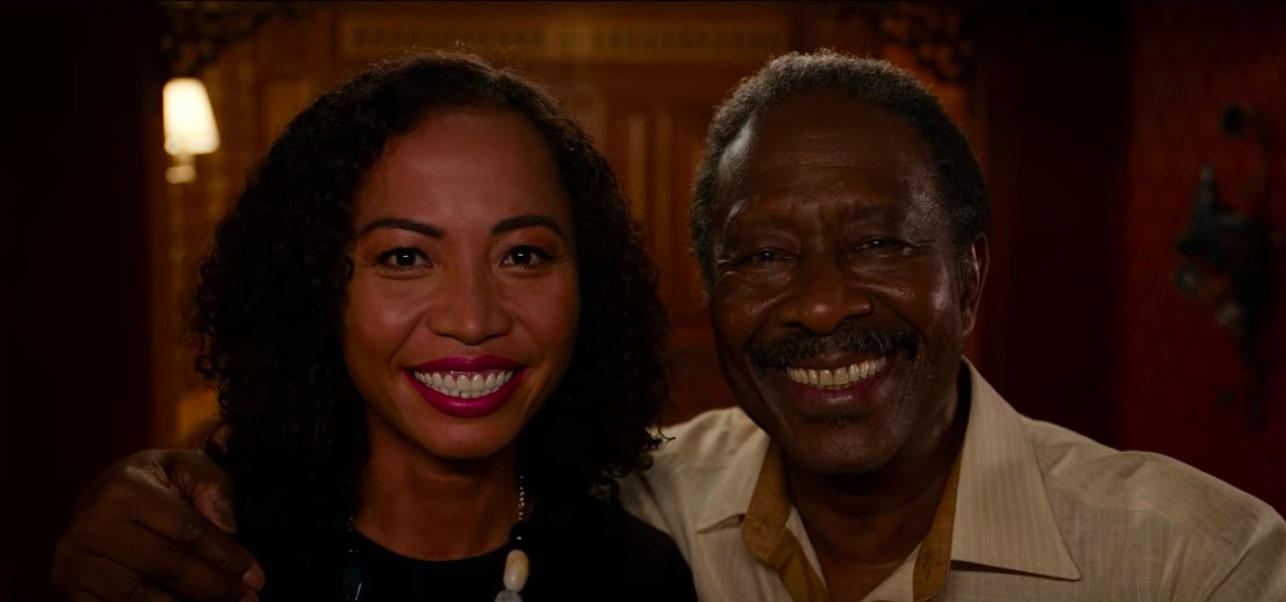Spike Lee’s newest 40 Acres and a Mule production, the excellently crafted “Da 5 Bloods,” sees four Vietnam War veterans—Eddie (Norm Lewis), Paul (Delroy Lindo), Otis (Clarke Peters), and Melvin (Isiah Whitlock Jr.)—reunite after years apart. Ostensibly a reunion designed to bring back the remains of their fallen comrade Stormin’ Norman (Chadwick Boseman) for burial, with the help of Paul’s son David (Jonathan Majors), the four have actually returned to Vietnam to find a buried trove of gold bars originally promised by the CIA to local guerilla warriors.
“Da 5 Bloods” explores the consequences of what the Vietnamese characters call the American War. However, another ramification from the struggle involved Black Amerasians. During the conflict, African-American GI’s formed relationships with local Vietnamese women; some women worked as “bar girls” and others as sex workers in Saigon. The result of such a relationship plays out between Otis and Tiên (Lê Y. Lan) in Lee’s film. No longer a sex worker, Tiên now specializes in international exporting. When Otis visits her, he’s there partly for business—she knows a French money launderer (Jean Reno) who can convert the gold bars into cash—but he’s also arrived for the pleasure of sharing dinner with an old flame.
Unbeknownst to Otis, he and Tiên have a daughter named Michon (Sandy Hương Phạm). Tiên explains to him that other Vietnamese people made the pair into pariahs. The mother, for sleeping with the enemy, and the daughter for being half-Black. Through Otis and Michon, Lee explores the post-war fate of Black Amerasians—a Black experience defined by biraciality—as another type of treasure in “Da 5 Bloods”: reunification of father and daughter.

Amerasians were often derisively referred to as “children of the dust” or “half-breeds” in Indochina. Statistics for the number of offspring from GI’s remain unclear. But per Amerasians Without Borders, “it was estimated that there were about 25,000 to 30,000 Amerasians born within a 10 years period during the Vietnam War.” Faced with prejudice, some Amerasians became refugees during the “boat people” era (1975-95). They fled through the Vietnam Sea to surrounding countries like the Philippines, Singapore, Thailand, etc. by way of crudely crafted boats. Many refugees did not survive the journey. Worst yet, the offspring of GI’s were not accepted by America either. “The care and welfare of these unfortunate children … has never been and is not now considered an area of government responsibility,” the U.S. Department of Defense explained in a 1970 statement. Nevertheless, in 1975 President Gerald Ford ordered Operation Babylift to evacuate orphaned children by helicopter so they might be adopted by American families. Some of these Vietnamese orphans were Amerasians abandoned by their now ostracized single mothers. Military Times explained, “In all, 2,547 children were rescued and adopted by families in the United States and allied countries.” Controversy remains over Operation Babylift, since some children were not orphans when evacuated. Finally in 1987, President Ronald Reagan signed the Amerasian Homecoming Act to allow Amerasians the right to immigrate into the U.S.
Though Michon and Tiên occupy a lavish home, adorned with a spacious living room with an opulent and colorful dining room overlooking the skyline of Ho Chi Minh City (formerly known as Saigon), their current status comes as a stroke of luck. The progeny of American GI’s and Vietnamese women who remained in the country often faced the prospects of a poor education and a limited financial future. In the Philippines, according to a study conducted by Dr. Peter Kutschera, Director of the Philippine Amerasian Research Institute, “We have a severely socioeconomically impaired population, especially among Africans, who contend with serious physical and mental stress issues, including homelessness, alcohol and drug abuse.”
And like the neon storefronts for KFC and McDonalds that litter the streets of the Communist country, racism became another surplus exported from America during the 1970s. In fact, Tiên tells Otis, “We was too dirty to even clean the toilet” once he left. Local Vietnamese called Michon “the cockroach.” The “n—.” These racist slurs weren’t native to the ethnically homogenized Asian country—as Tiên explains, the white GI’s taught them those words. In this way, racism counted as another permanent scar from the war.
This sudden shock of information leaves Otis speechless. With only his inquisitive finger gesturing hesitantly in the air, he asks Tiên if Michon is indeed his daughter. Once confirmed, he winces with the sting of regret in the crows of his eyes as he gulps his wine. If in that moment, Terence Blanchard’s piercing score were to break Otis’ glass of wine across his face, he’d feel less pain than knowing Michon grew into adulthood without him. His only recourse is to pour another glass.

The scene not only presents an incredible performance from Peters, but also influences his character’s motivation for the rest of “Da 5 Bloods.” Tiên shifts from an old flame who is now a business partner to the mother of his child. And when Paul grills Otis on her allegiances, claiming she’ll betray them in a dope-fiend double-cross because she’s a “Soul Alley ho,” the xenophobic and sexist insults cut even deeper. When Otis tells Paul he’d better check himself, and then tries to fight him, he isn’t just fiercely defending Tiên’s honor, but vicariously, in a way he couldn’t before, he’s also protecting his Amerasian daughter Michon too.
For her part, Michon believes Otis to be her father, even though Tiên told her that her father died during the war. When challenged by her mother, Michon exasperatedly says, “You owe me this.” Because not only has Michon experienced discrimination, as an interracial child, she most likely has frequently confronted the undefinability of her identity. In raising Michon, by lying to her about the identity and fate of her father, one can conclude that Tiên distanced Michon from her racial background in an attempt to shield her from prejudice. However, this decision made Michon unmoored from a part of herself. Fluent in Vietnamese, Michon wants a father and to a point, a chance to know her other Black family, to see others who look like her.
Michon is somewhat of an exception in this regard. Often Black Amerasians, after a lifetime of abuse and prejudice, feel self-hatred. In 1992, the New York Times did several interviews with Black Amerasians. One claimed they were “ashamed that [their] mother was with a black man.” Others told of feeling isolated, bullied, and depressed. “Their self-esteem is so low,” another person opined. Michon doesn’t display any of these emotions because Lee’s film is all about blood: brotherhood with the unrelated and the mending of family rifts caused by recurrent battles long-since passed. Michon and Otis represent a moment for solidarity and Black love, no matter one’s background.
By the end of “Da 5 Bloods,” after a shootout at a temple among bloods and bandits, Otis returns to Tiên and Michon one last time. Through editor Adam Gough’s impactful repeat cut, they embrace in a physical reunification mirroring the decades earlier joining of the country they now occupy. Tears stream down their faces. Most importantly, Lee reserves his patented double dolly shot—when an actor stands on a dolly that’s pulled forward to create a levitating effect—for Otis and Michon. “Da 5 Bloods” certainly features the most uplifting version of the effect, as Marvin Gaye’s unifying anti-war song “What’s Going On” spins in the background. For Otis, who admits to suffering PTSD and taking Oxycontin for his hip pain, and mourns now-deceased friends like Stormin’ Norman, Michon represents the one good thing that came from that bloody white American war. And for Michon, reuniting with her father emotionally completes her. The double dolly shot expresses their unmitigated happiness, emitted so powerfully they rise from the ground. And amid betrayal, paranoia, racism, and a thirst for gold in the film’s other storylines—Otis and Michon are the treasures worth finding and fighting for in Lee’s “Da 5 Bloods.”












